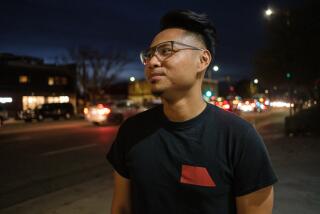Santa Monica makes its own mark with minimum wage increase
The city of Santa Monica spent eight months shaping a minimum wage ordinance that would put it in line with both Los Angeles and the county.
The measure council members passed Tuesday does that, but it also makes its own mark with elements specific to the liberal coastal city.
As in Los Angeles, Santa Monica’s law will phase in wage increases and raise the minimum wage at most businesses to $15 by 2020. Hotel workers get a special boost: Their hourly wages will reach $15.37 by 2017, a year after their L.A. counterparts.
The Santa Monica measure also includes a provision that L.A. rejected. To support union agreements and encourage employers to be union-friendly, it exempts employees covered by collective bargaining agreements.
And it adds generous paid leave — well beyond the minimum three days required by the state. Employees at Santa Monica businesses with 26 or more workers will be able to accrue up to nine days. At smaller businesses, they may earn up to five.
The city’s hotel-worker wage applies to all of its hotels and motels — as well as associated on-site businesses such as restaurants.
Qualified nonprofits and companies with 25 or fewer workers get an extra year before their employees reach the top minimum-wage rate.
Companies operating on the Santa Monica Pier that rely heavily on seasonal workers fought for and won a special concession.
Pacific Park, the pier amusement park, and Perry’s, with its cafe and beach rentals, said paying the higher minimum wage would force them to cut staff or hours.
About half of Pacific Park employees and about one-third of Perry’s are first-timers, the businesses said. At peak season, they hire many students and people under 25.
The ordinance allows them to pay first-time workers 85% of minimum wage for the first 480 hours of work or six months, whichever comes sooner. That’s 12 weeks for someone working 40 hours.
Crafting a wage ordinance that would suit all sides proved tricky — as Santa Monica officials learned when more than 50 people signed up to speak Tuesday night.
I think maybe there’s a misconception people have that teens use their little income on things like clothes and electronics.
— Paloma Nicholas, a student at Santa Monica High School
Among them were high school students who came to fight the first-timer exception.
Paloma Nicholas, who attends Santa Monica High, said she was president of a campus club called La Sociedad — “founded on the idea that we can take action into our own hands.”
She said she was proud of her city for producing “the most progressive minimum wage ordinance in the country.” But the first-time worker exception, she said, “disincentivizes business owners to rehire teen employees” the following summer.
“Most students take on a part-time job to pay for college, water bills, electricity bills, rent,” Nicholas said. “I think maybe there’s a misconception people have that teens use their little income on things like clothes and electronics.”
Many at the meeting were members of Local 11 of Unite Here, a union that represents, among others, workers at restaurants and hotels.
They spoke in support of the minimum wage laws but also of their personal challenges: long commutes, paychecks that often are spent before they arrive, bosses who they said try to cheat them.
After hearing all the speakers’ concerns, the council directed the city manager to form a working group — which would include those affected — to go over controversial aspects of the law and possibly fine-tune them.
Later this month, the ordinance will go before the council for a final vote.
When it came time for lawmakers to vote Tuesday, the focus zoomed out from the details to the big picture.
“I guess we’re making history tonight,” Councilman Kevin McKeown said. “I hope that we will become the reference city for workers’ rights.”
Twitter: @latimescitybeat
More to Read
Start your day right
Sign up for Essential California for news, features and recommendations from the L.A. Times and beyond in your inbox six days a week.
You may occasionally receive promotional content from the Los Angeles Times.







